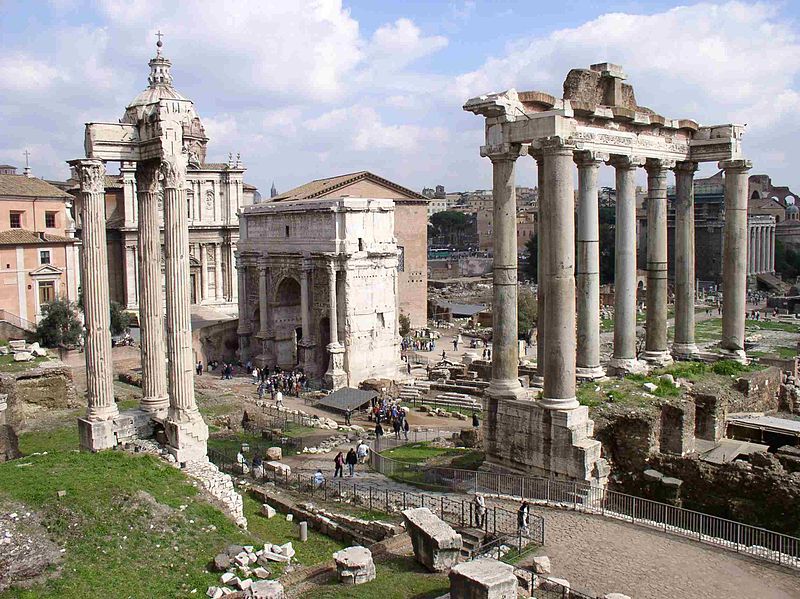Today I am taking a virtual tour of Rome according to a post on LonelyPlanet.
First I will start my day at the Piazza della Rotunda, where the famous Pantheon is. This structure is one of the Romans' most significant and important architectural achievements mainly because of its large dome. The whole building has extremely carefully calibrated dimensions and symmetry which allowed for it to remain a spectacular feat of engineering even to this date of incredible technological advances. The monumental building is the most well preserved ancient Roman architecture today because of its consecration as a church since the 7th century, which is lucky for all of us tourists and art historians.
 |
| Pantheon, Rome, Italy (118-125AD) |
After the Pantheon, I will walk to the Capitoline Hill through Piazza Venezia, the heart of the city. Past the sweeping stairs I arrive at the Michelangelo's Piazza del Campidoglio. There we see the headquarters of Italian government as well as the statues of Romulus and Remus. This place houses many examples of Renaissance architecture.
 |
| Michelangelo Burronaroti, Piazza del Campidoglio, Rome, Italy (1536-1546) |
Following the Capitoline Hill, I walk down Via del Imperiali to the Roman Forum. This area was the center for Roman public life. The Forum was the site for many important buildings for centuries in Roman history and it became the spectacular showcase of the Roman Empire filled with beautiful statues and architecture. As time went on since Caesar's forum, his successors makes it a point to outdo the previous emperor with large, more extravagant monuments of their success, proving how architecture embodies the ideologies the 'elite' wish to proclaim.
 |
| Roman Forum, Rome, Italy |
From there I walk to the Colosseum, several minutes away. Colosseum is the icon of Roman history and culture. This structure represents not only the Roman Empire's strength through its incredible size, but also the fascinating violent culture of the time. The Colosseum remains as the symbol of Imperial Rome despite the damages from stone robbers and earthquakes as it symbolizes the wealth and power of the ruling family, the Flavius'. It demonstrated the abundance of resources they had, the contentment and stability of their empire to allow for such investments in pure entertainment.
 |
| Colosseum, Rome, Italy (ca. 70-80AD) |




No comments:
Post a Comment